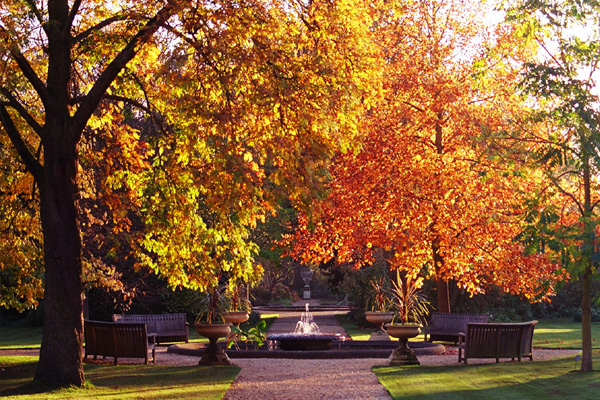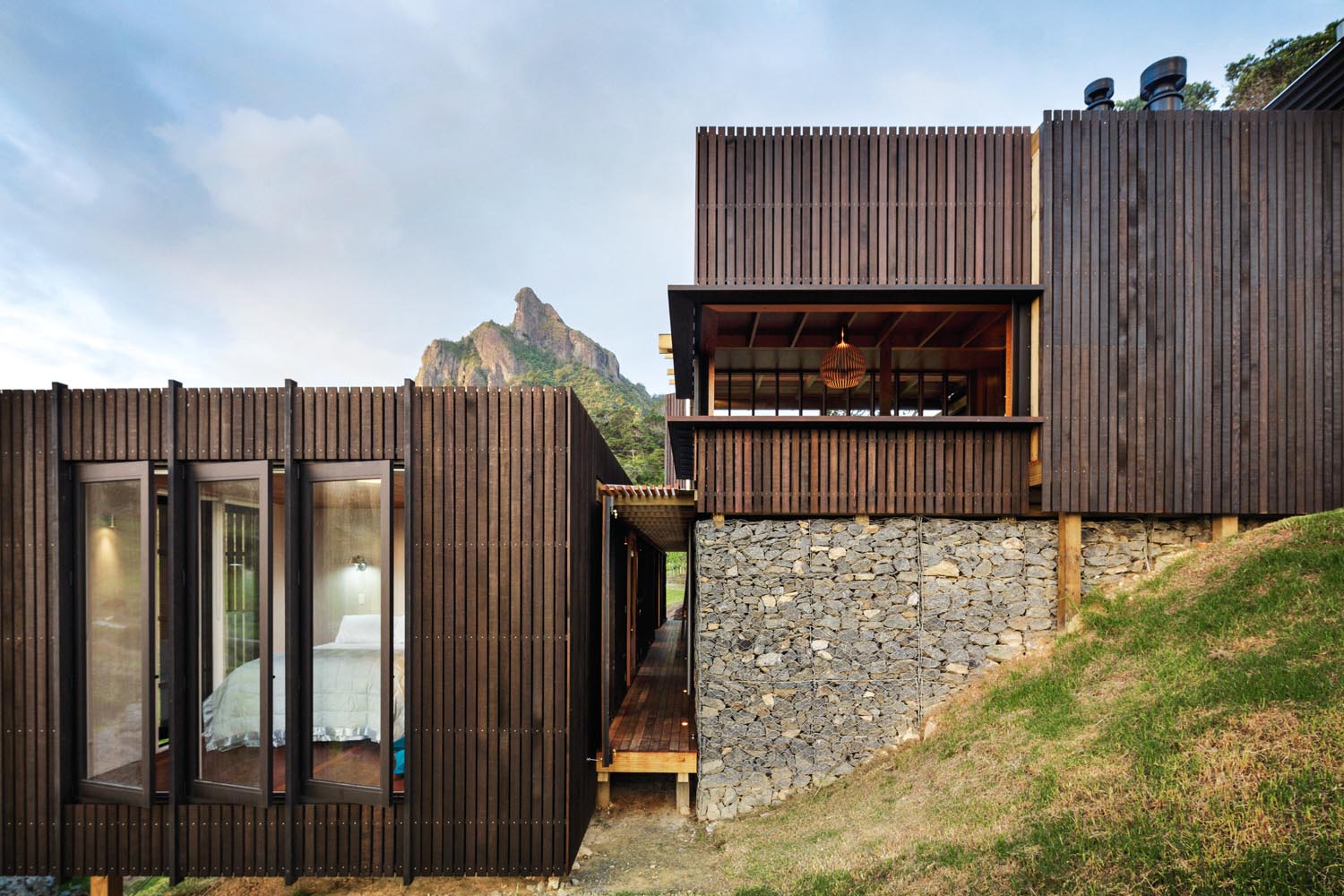Charlie Albone, the designer behind successful bespoke landscaping firm, Inspired Exteriors, takes a look at deciduous trees and how to incorporate them into your garden
A space bursting with hues of burnt orange and rich yellow will lure you into the fresh air all year long
Autumn is my favourite time of the year to be outside in the garden, the flowerbeds are overflowing with late-blooming plants and there is an abundance of foliage. Plus, the drop in temperature means it’s much more comfortable to be out enjoying the space. Traditionally, the season is used for preparing the garden for winter and the following spring. However, I like to use the time more effectively and get stuck into a good bit of design.
Now is the time to get your autumn foliage plants in the ground. I only ever buy plants that give good autumn colour in the season itself as this ensures I know the exact effect I’m going to get year after year. Each plant is different due to its breeding stock, so any liquidambar may not give the same colour as one grown at a different nursery. Although stand-alone trees can have a real impact on your landscape, a collection of autumn trees can look like fireworks in the garden if you have the space. Grouping your trees not only looks spectacular, but can also offer a great shady spot to retreat to in the hotter months, as well as a sculptural grove of timber during winter.
My top-five autumn trees are:
- Ginkgo biloba ‘maidenhair tree’ has the most spectacular yellow foliage, and new fastigiated varieties — upright growth rather than spreading — mean they can be used in all garden sizes.
- Chinese pistachio trees have a shocking red value to the colour they produce — almost like bright red lipstick. The tree is also so versatile, providing good colour in warmer climates, too.
- Liquidambar has to be the king of the autumn trees, turning a deep, almost purple, red. These are big trees, so make sure you have the space for them. They also look best with brighter colours such as the yellow of the ginkgo in front of them rather than behind.
- Japanese maples come in many shapes, sizes and colours and there are lots for the small garden as well. Ensure these plants go in a sheltered position out of strong winds and afternoon heat.
- The forest pansy has deep purple heart-shaped leaves that turn yellow and orange in autumn. I love this tree, not just for its change in foliage colour but also for the abundance of pea-shaped purple flowers in spring.
When planting trees, always take into consideration the mature height of the tree, as what may look great in scale and proportion now could overgrow and dominate the space. The size of your trees will also determine the spacing you give them.
Allow the colours you select to intermingle around the edges without overcrowding and cluttering the branches. Overlapping different colours needs to be done by carefully staggering the plants. I always set my plants out and leave them for a few days so I can view them from many different angles and times of the day to ensure I only plant them once.
Deciduous plants put off many people as they often worry about the leaf drop and cleaning up towards the end of the season, but this can be a fantastic benefit to your garden health. Collecting the fallen leaves and rotting them down is called “creating leaf mould”. It’s a simple task where you pile all the leaves together in one spot — ensuring they are soaking wet — and cover them with a tarp. Containing them in a bin is a good idea as this stops them from blowing about later in the year and looks much tidier.
Leave them for 12 months (this can be sped up to six months if you shred them by running a lawn mower over the leaves) and then simply dig them into the topsoil of your garden beds. The leaf mould you create is a great additive and will aid the structure of the soil that helps retain moisture and nutrients, making them readily available to your plants.
If you don’t have the space or enough leaves for a leaf mould, collect what you have and place them in a black bin bag. Fill the bag with water and put two small holes in the bottom. This can be left behind the shed, and you will obtain similar results in around nine months.
The thing I love so much about using autumn-coloured foliage is that it extends the period of interest in the garden into the next season. In every garden, there should ideally be something that draws you outside no matter the time of year.





